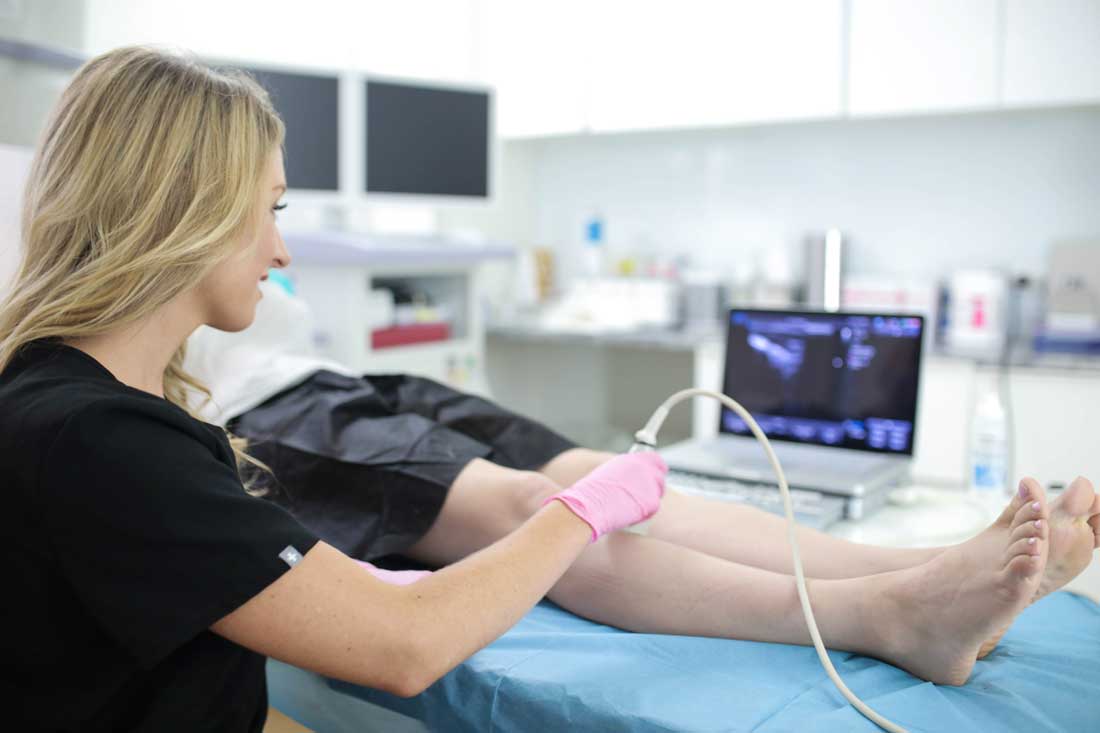Why does chronic venous insufficiency occur? What are the main factors that favor its appearance? Increased sedentary lifestyle in western society, high life expectancy, obesity, and prolonged orthostatic make venous diseases a high incidence today.

Venous diseases affect between 10 and 40% of the adult population, especially in the lower extremities, according to the latest studies. Chronic venous insufficiency affects 50% of the population that is over 50 years old. The venous system of the human body is outlined below.
Symptoms in venous insufficiency
The patient affected by venous insufficiency must assume that even by taking preventive measures, his condition is chronic and evolutionary. Therefore, the Venous Insufficiency Symptoms and manifestations that are detailed below will appear over time:
Stage 1
Increased relief and increased coloration in the veins. We observe cylindrical, saccular, and reticular varicose. The patient usually has no discomfort.
Stage 2
Orthostatic symptoms appear severe pain, heaviness or cramps in the legs, itching, and tingling, pain that worsens when standing, pain that improves when lifting the legs and swelling in them.
Stage 3
It is characterized by dermatological manifestations: blackish-brown pigmentation in the malleolus, alteration of the capillaries, itching, and atrophy in the skin.
Stage 4
The skin has been eroded, resulting in a varicose ulcer that usually drains pathological tissue. For its healing, a strong compressive bandage, drainage, and thorough cleaning of the wound are recommended, since it is vitally important that the ulcer is not infected.
Conservative and preventive treatment
Conservative and preventive Chronic Venous Insufficiency Treatment contemplates the following strategies:
Generic measures
They try to counteract the factors that aggravate venous insufficiency.
Physico-postural measures
To physico-postural measures, rest with elevation of the lower extremities is recommended; lymphatic drainage performed by a professional and hydrotherapy that combines showers with cold water and massages.
Compressive measures for venous insufficiency treatment
The lower extremities have a kind of mesh made up of closely grouped collagen fibers that compress the muscles and is called the rigid leg fascia. The fascia, together with the venous valves, guarantees a good return of blood to the heart.
In cases of venous insufficiency, this fascia is perforated, so that the blood is not compressed correctly, so that part of it accumulates under the skin, producing edema.
Elastic compression is basic in the conservative Venous Insufficiency Treatment Houston in all its stages. The key to its effectiveness is to increase the local interstitial pressure and decrease the diameter of the veins, favoring venous return and reducing reflux so that venous hypertension is decreased. Therefore, symptoms are improved, edema is reduced, and the evolution of venous insufficiency is delayed.
Instrumental pressotherapy
It is made using inflatable covers at different pressures according to the needs of the patient and pneumatic compression pumps.
Situations of immobility of the lower extremities or periods of prolonged standing should be avoided.
Pharmacotherapy
The pharmacological treatment will be carried out together with the previously mentioned preventive measures to treat Chronic Venous Insufficiency Causes. There are a wide variety of drugs applicable to chronic venous insufficiency, mainly classified as venotonics and other drugs indicated to combat certain complications associated with the disease.
Sclerotherapy
Sclerotherapy involves the intravenous injection of an irritating substance to produce a controlled injury to the endothelium so that the vein is closed. This technique is associated with elastic compression.


